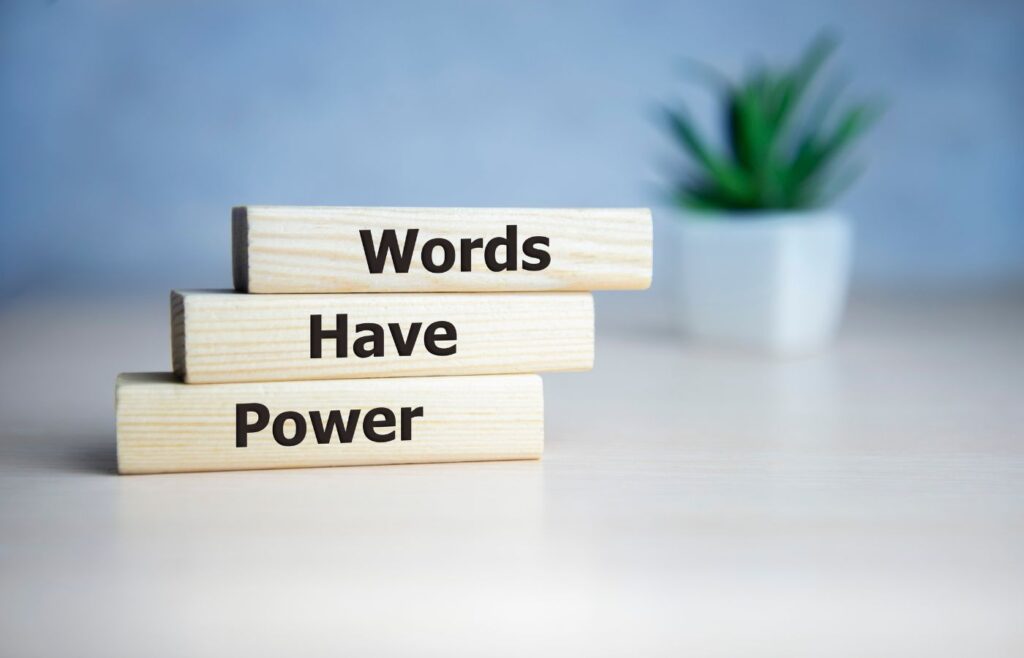In today’s crowded market, you need to stand out. While those already in the know about your brand or products are 60 to 70% more likely to purchase from you again, when it comes to new prospects, the probability of making that sale can be as little as 5%.
People don’t like buying from brands they don’t trust. If they’re unsure of what they are getting in return for their hard-earned cash, they’re not going to be chomping at the bit to hand it over.
You need to be persuasive.
Persuasive copywriting is the difference between a customer acting or leaving without a trace. Lucky for you, we’ve got ten persuasive writing techniques with examples to show you how to get it right.
What is persuasive copywriting?
In short, persuasive copywriting is a piece of written content marketing that is crafted to convince a reader to take a specific action. A piece of persuasive writing will usually:
- Encourage immediate action with a clear, compelling call to action.
- Highlight the benefits of a product service over the features.
- Tailor the messaging to a customer’s pain point.
- Communicate a clear value proposition.
- Use emotional triggers to connect with the audience.
- Include testimonials, case studies or reviews.
- Use storytelling techniques to make the message more memorable.
- Avoid jargon and ensure the copy is easy to understand.

Sounds like a lot, right?
Despite its long checklist of features, a great piece of persuasive copy could win big in just a few words. Apple is well-known for impressing tech fans in sentences under ten words. They are masters in showing that what you say comes second to how you say it. More on this later when we share our top persuasive copywriting techniques.
The benefits of persuasive copywriting
All brands should be invested in persuasive copy. Whether that’s hiring a really good copywriter to work in-house or partnering with a credible content agency, your copywriting should never be an afterthought.
Persuasive writing can have a dramatic effect on the success of your marketing campaigns while also:
- Increasing conversions
- Enhancing engagement
- Strengthening your brand image
- Improving customer trust
- Giving your brand a competitive edge
- Increasing customer loyalty
Need some evidence? These stats on persuasive copywriting techniques might persuade you:
- Readers only read 20 to 28 per cent of the content on a page, so every word needs to count.
- Cut the jargon. The copy that could be understood by eight to nine-year-olds is likely to get 36% more responses.
- Explain yourself – including the word ‘because’ in your request can increase the number of actions from 60% to 94%.
- Your intentions must be clear – having more than a single offer on a landing page can decrease conversion rates by 266%.
When does it pay to be persuasive?
There’s a time and place to be persuasive, but it’s probably easier to list the times when persuasive writing may not be a top priority. For example:
- Technical or informational documentation that should prioritise clear and accurate instruction.
- News reports or articles aimed at informing your audience.
- User manuals.
- Instructional guides.
- Frequently Asked Questions.
In these examples of functional documents, your copywriter should prioritise clarity over persuasion. Sales copy, on the other hand, is when it pays to be persuasive.

Sales copy includes:
- Landing page copy
- Product descriptions
- Email marketing copy
- Social media or search ads
- Copy in printed advertisements or materials
- Press releases
- Video scripts
And pretty much everything else. What makes writing persuasively a little tricky is knowing which technique to use, how to get it right, and when to use it.
Persuasive copywriting techniques to use in your marketing
Here are our top persuasive copywriting techniques that lead to better engagement and more conversions. Let’s jump in:
Tell a story
Storytelling is a classic persuasive writing technique that’s been used since the dawn of time – kind of. It’s captivating, mesmerising, and when really good, pretty damn memorable. We humans love to tell stories, and from around the campfire to the digital age, their effectiveness has never dwindled.
As consumers, we are exposed to thousands of brand messages every day, but we are only aware of about 86 of those that we see, and of that small proportion, only 12 will make a lasting impression. Storytelling helps brands stand out from the crowd; it makes your content 22 times more memorable and can boost conversion rates by 30%. Just how accurate those numbers are is somewhat beyond me – we’re writers not statisticians! – but the general idea is sound: storytelling works.
To tell a good story in your copywriting, you need to:
- Establish clear context and setting
- Introduce a relatable protagonist
- Present a conflict or challenge
- Show the journey and use emotional triggers
- Introduce the solution (which should be your product or services)
- Highlight the benefits
- End with a strong resolution
And for a brand that gets its storytelling right every time, take a look at Dove’s Self-Esteem Project.
Don’t ask, invite
We all like to belong to something. Whether it’s a sport, hobby or career, a label that shows we have interests or purpose makes us feel good. There’s no denying it. With this in mind, stop asking your audience to act. Instead, invite them to become part of an aspirational identity that would already do the thing you want them to do. For example:
- “For people who run” becomes “For runners”.
- “Support us” becomes “For change-makers like you”.
- “The shop for people who read books” becomes “A home for bookworms and readers”.
- Why does this work? It’s a great way to create a sense of belonging. To build a solid connection with your brand. We can be humble, but when we feel seen or understood, we are more likely to engage. And when working towards a goal that feels pretty aspirational or impressive, being grouped in with the people we aspire to be like is a somewhat euphoric feeling.
Nike is a brand constantly hitting this persuasive copywriting technique out of the park, and their Born an Athlete campaign is a great example.

Make assumptions
While many of us are taught never to assume in day-to-day scenarios, in marketing, the advice couldn’t be more opposite. To write an effective piece of persuasive copy, you need to make assumptions. Less if and might, more when and will. Which one is more effective?
“Do you want to start working out more? Our app can help.”
Or:
“You want to get fit, and with our app, you will.”
While the former is rather prim and proper, the latter gets straight to the point. It recognises its target customers and provides them with a quick-fix solution that will help. It doesn’t need to ask if working out is on your mind – you read their copy, so it assumes it already is. By implying something your readers are already thinking about, they are more likely to find relief in your solution.
Estrid uses this technique well on their ‘How it Works’ page.
Use power words
Power words work because they tap into the human psyche, relate to our desires or fears, and make us feel something. They’re an effective tool that can:
- Trigger emotions with words like love, hate, fear and hope.
- Create urgency with words like now, limited, exclusive or urgent.
- Highlight benefits with words like free, instant, guaranteed and proven.
- Built trust with words like expert, tested, reliable, and trusted.
To incorporate power words into your copy effectively, consider placing them in:
- Your headlines
- Your calls to action
- Your product descriptions
- Your social proof
Apple is a brand that does this really well. Their product descriptions and landing page copy are filled to the brim with aspirational power words like “smarter”, “brighter”, “mightier”, and “innovative”. And for a list of over 700 power words to use, we really like this one by OptinMonster.
Use bucket brigades
A pretty old-school content marketing technique, but one that is still really effective, nonetheless. Bucket brigades are short, transitional sentences or questions used to reengage a reader or emphasise a point:
- So, what’s the verdict?
- The best part?
- Here’s the deal…
- You’re probably wondering…
- Why’s that important?
- But wait, there’s more.
- But that’s not all…

Bucket brigades work because:
- They provide a natural break in the text
- They create a conversational tone
- They offer a little direction to readers
- They improve the flow of the content
Use bucket brigades on their own line for an easy-to-read copy. And, to make sure it sounds natural, we suggest reading your copy out loud.
To see bucket brigades in use by a brand that hits the nail on the head, you only need to read a handful of Buzzfeed articles and you’ll spot things like ‘here’s the kicker’ and ‘needless to say’.
Break the fourth wall
In theatre or film, breaking the fourth wall is when a character steps out of the fictional world to directly address the audience. And in copywriting, it works in a pretty similar way.
When David Abbott (one of advertising’s greatest copywriters) was alive he used to break the fourth wall often in his memorable ads.
- Volvo ‘If the welding isn’t strong enough…’ad (1983): In this ad, David took breaking the wall to the extreme. To prove a point that the Volvo 740 was safe, he put his “body where his mouth is”. Yes, you’re seeing that correctly, that’s David right there beneath the car in the ad.
- Chivas Regal’s ‘Father’s Day’ ad (1980): This ad was a Father’s Day message from David to his father. The message is deeply moving because it’s personable and honest and because of that, it ends up becoming universally appealing to audience members who relate to what David has to say. Those who feel a lot like David will want to buy a bottle of Chivas Regal.
To break the fourth wall in your persuasive writing, you can:
- Ask question
- Use second-person pronouns
- Acknowledge the reader’s thoughts or feelings
- Share secrets, tips or insider information.
Urgency through scarcity
Have you ever felt the fear of missing out? FOMO is real, and a pretty persuasive copywriting technique that many brands use to entice users to spend their money. By implying that a product or offer is limited in quantity or time, you can encourage hesitant readers to act quickly before they lose the opportunity. This works because:
- It creates a sense of exclusivity
- It prompts immediate action
- It increases the perceived value
- It encourages commitment
For example, turn “Buy now” into “Limited edition release – once it’s gone, it’s gone for good”.
Or
“Subscribe to our newsletter” into “Join our waitlist for early access to our newest product launch”.
Amazon is a prime example (no pun intended) that effectively uses this persuasive copywriting technique in its sales copy. The e-commerce giant frequently employs tactics such as limited-time lightning deals, countdown timers, and low-stock alerts to drive immediate action from customers. For example:
- “Only 5 left in stock – order now to secure yours!”
- “Deal of the Day – ends in 12 hours!”
- “Limited-time offer: 30% off select items – shop now!”
Raise and answer objections
Raising and answering objections is a crucial aspect of persuasive writing that can help brands build trust and credibility. It’s a technique that eliminates hesitation or qualms; it lays it all out for readers to come to a thorough, well-informed conclusion.
Addressing pre-conceived objections works because
- It demonstrates transparency and a comprehensive understanding of a brand’s target audience.
- It provides clarity and reassurance.
- It helps readers overcome resistance.
- It demonstrates expertise and knowledge.
To effectively raise and address objections in your persuasive writing, you should:
- Anticipate common objections and address them proactively.
- Support your reassuring responses with evidence, testimonials and caste studies.
- Show empathy and understanding towards your audience’s concerns/
- Emphasise the benefits and solutions that your product or service offers to mitigate objections.
- Be clear and concise.

For example, this might look like
Objection: “I’m not sure if this product will work for me.”
Response: “We understand – choosing the right product can be daunting. That’s why we offer a 100% satisfaction guarantee. If you’re not completely satisfied with your purchase, simply return it for a full refund, no questions asked.”
Or
Objection: “I don’t have time to implement this solution.”
Response: “We get it – time is precious. Our solution is designed to be easy to implement, with step-by-step instructions and dedicated customer support to guide you every step of the way. Plus, you’ll start seeing results in as little as [timeframe].”
For a brand that does this well, take a look at Slack’s copywriting.
Be clear on the next steps
You’ve probably had a frustrating experience while shopping online. Perhaps when the checkout process hasn’t been too clear, or there aren’t any clear instructions on how to enquire. Sometimes, your customers will need a little direction too, and there’s nothing wrong with holding their hands at pinnacle points of the buying process. Clarity on the next steps empowers readers and increases the likelihood of them following through with the desired action by:
- Reducing confusion or ambiguity
- Facilitating decision-making
- Increasing confidence
- Driving action
To ace this persuasive copywriting technique, you should use action-oriented language, provide specific instructions, use visual cues, reinforce benefits, and include multiple touchpoints. This may look like:
- “Ready to get started? Click the button below to sign up for your free trial.”
- “To learn more about our services, simply fill out the contact form, and one of our experts will be in touch with you shortly.”
- “Don’t miss out on exclusive savings – shop now to enjoy 20% off your first order.”
- “Want to stay up to date with the latest news and offers? Subscribe to our newsletter for weekly updates delivered straight to your inbox.”
Airbnb’s booking process is an excellent example of showing customers what they need to do. Take a look at it here.
Provide proof
And lastly, you need to provide proof. Giving evidence is probably the most effective technique you can use to persuade someone of a decision. It’s why it makes the foundations of entire judicial systems. Evidence is convincing; it’s proof that something does or doesn’t work. And when you know something is effective, you’re much more likely to want to get a slice of the action yourself. In fact, 92% of consumers feel hesitant to buy when there are no customer reviews, so what other people say about your brand is more important than ever.
Examples of the kind of proof people expect from a brand include:
- Testimonial: “I’ve tried numerous skincare products, but none have worked as effectively as this one. My skin has never looked better – I’m thrilled with the results!”
- Case Study: “See how Company XYZ increased their revenue by 50% in just three months with our marketing software.”
- Statistic: “Over 95% of our customers reported a significant improvement in their overall well-being after using our wellness program.”
- Endorsement: “Recommended by top dermatologists nationwide for its clinically proven formula and outstanding results.”
Patagonia effectively provides proof in its copywriting by showcasing its commitment to sustainability and ethical practices. Through its website and marketing materials, Patagonia shares stories, videos, and statistics that highlight its environmental initiatives, fair labour practices, and impact on communities. This works really well in proving to customers that they’re not all talk.
Conclusion
So there you have it, 15 persuasive copywriting tips to help you ace your next marketing campaign. To wrap things up, we’ll say this again: persuasive copy is the difference between winning big and heading home with your tail between your legs. To get it right, you need to:
- Write words that command attention. In a world where attention spans are fleeting, your copy needs to stand out. Be creative, be authentic and back everything you say with proof.
- Remember who you are speaking to. Your customers will influence how and what you say in your marketing. You can’t forge personalised experiences and genuine audience relationships without getting this right first.
- Know how crucial it is. To stand out, you need to be persuasive. But to get it right, you need to have a copywriter on your side who really knows how to write. And that’s where we come in. We’ve been writing great content since before the iPhone. Our professional UK writers know how to get to the heart of your brand and write copy that resonates with your audience. If you want to find out more, get in touch.
Do you have a tried and tested persuasive copywriting technique you want to share? Leave a comment below.
